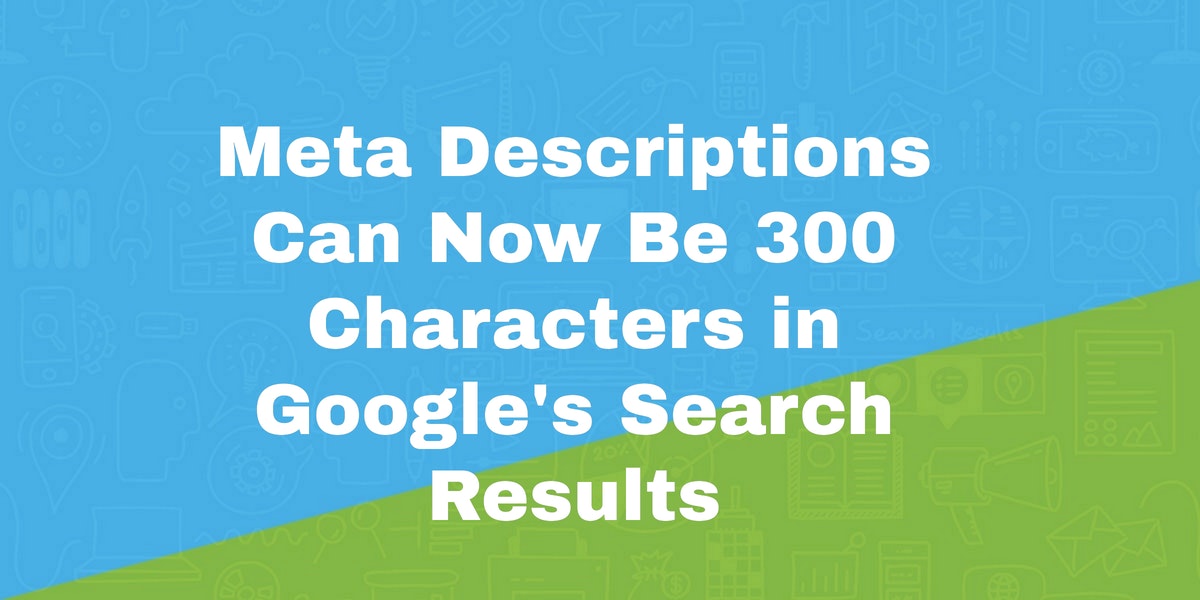As of December 5, 2017, I’ve been able to get 300 character snippets in Google’s mobile search results. Google is now showing larger snippets in both desktop and mobile search results, and to better control the snippet displayed you can now use up to 300 character Meta Descriptions.
Some mobile results max out at 160 characters
Some mobile search results are only displaying 160 characters. Others are displaying up to 300. I thought I saw 320 the other day but now I don’t see it.
Notes
Is it time to say goodbye to 160 characters? If this sticks several CMS backends, WordPress plugins for optimizing Meta Descriptions like Yoast SEO, and various SEO audit tools will need to be updated.
Notes: This could all completely change tomorrow but I am betting the changes are here to stay. Also, I’m unsure of what the exact count will end up being. As of December 6, 2017, I’ve been able to get a maximum of 300 characters to display on mobile. More may be available on desktop but it makes sense to optimize for mobile first.
Meta Description VS Snippet
You can manually edit a page’s Meta Description. And in many cases, that is what is shown in Google’s search engine results pages. However, the technical name for what is displayed is a Snippet.
In other words, you describe the page using the Meta Description. What Google shows may be that Meta Description, but when it is shown in Google search results, they call the Meta Description a Snippet.
Google may ignore Meta Descriptions
Google is usually pretty good at generating Snippets and has ignored plenty of Meta Descriptions for nearly a decade now. However, if you have a clear, concise meta description which accurately describes the page, the snippet shown is likely to match your meta description. This does, however, depend entirely on the user’s search query.
Tips for creating Meta Descriptions:
Google understands user behavior. When most people land on a page, they read the first sentence or two and they either contact you or leave the page. That’s just how it works. I always begin my content with a quick, clear accurate description of the page while also making it a call to action. A good rule of thumb is to make that intro the same thing as your Meta Description. And that is option #1 below.
Options:
- Match the Meta Description to the first paragraph of content on the page.
- Ignore the Meta Description. 9 out of 10 times I ignore the Meta Description all together and Google pulls my quick and clear first paragraph as the Snippet anyways. For important “money pages” aka “landing pages” it makes sense to take the extra step and provide a Meta Description. However, I predict Google will quit using Meta Descriptions all together at some point.
- Think. What is the optimal result that a search engine should display? If it is a list or a table, it makes no sense to use a Meta description.
If mobile search continues to display 160 – 300 characters, it may make sense to build out descriptions which have a 160 character sentence with a second sentence which is an additional 100+ words.
Broken Snippets (Google is not displaying my meta description)
With this new December update I have experimented on a few dozen pages. Sometimes Google ignores your meta. Why?
- Your Meta Description stinks! This is the most probably cause. But not always.
- Google is simply pulling content from the page which it should not be. It happens more than you’d think. They really like lists. If your page has a list on it, they could mistakenly pull that. These mistakes usually fix themselves over time.
- Google “Pure Spam” Penalty Deindexes Sites March 6 2024 - March 12, 2024
- What Happened to ChicagoNow.com? - August 30, 2022
- The December 2021 Google Local Pack Algorithm Update - December 17, 2021





Thanks Len. Since you posted this we have been changing the meta descriptions of high ranking pages to 260 – 300 characters with great success.
Do you think that meta descriptions are an SEO factor?
Great! That depends on how you define “SEO”.
Meta Descriptions are not a directing ranking factor of where a page shows up in Google Search Results.
However, a snippet which clearly describes a page will help users know what the page is about, and assuming it matches their search intentions, it will almost always result in a higher click through rate.